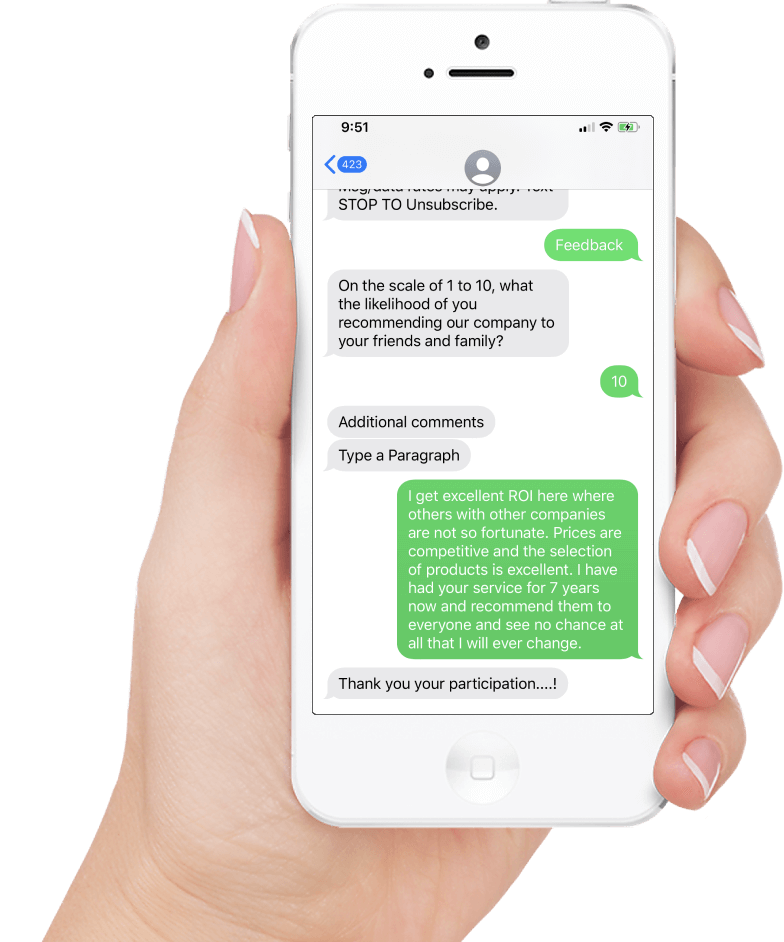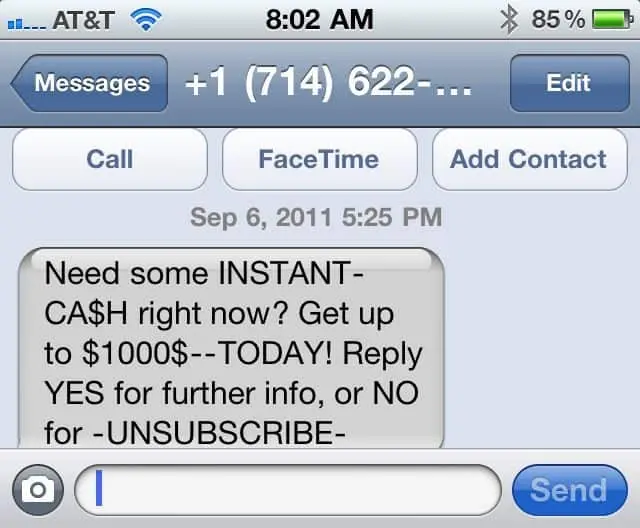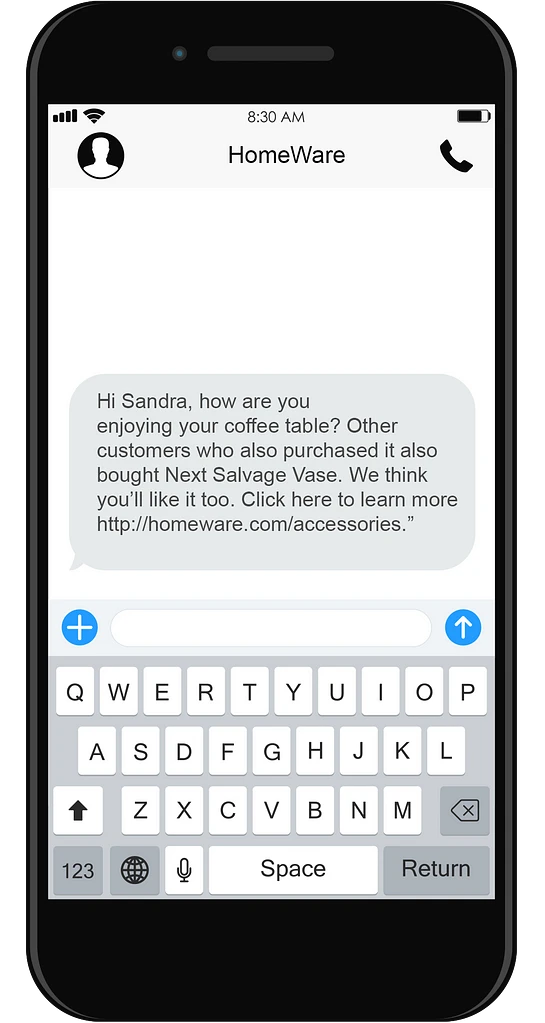Most modern businesses focus on apps as their sole method of mobile marketing.
Apps are an excellent mobile marketing channel because of the interactive experiences they offer customers, but they’re not always the quickest way to communicate with your customers: instant messaging is. Instant messaging compares competitively with both apps and email marketing.
On average, customers open 20% of marketing emails that land on their email and click links only 2.5% of the time.
For a marketer, there’s no better news! Instant message marketing is an excellent method to add to your marketing arsenal whenever you want to quickly get a message across to your customers and get their response.
This new frontier is taking marketing by storm. The following are some instant message marketing tips that you can use to boost your sales.
Top Instant Message Marketing Tips for Boosting Your Sales
- Build a Phone Numbers Database
- Exclusive Offers
- Find the Right Time to Send Your Text Messages
- Go Straight to the Point
- Call-to-action
- Tell Tales of Upcoming Sales
- A Chance to Win
- Link Instant Messaging with Other Advertising Methods
- Leverage Surveys
- Follow up Faster
- Customer Service
- No Spamming
- Opt-out Options
- Personalize Messages
- Engage Millennials and Gen-Z
- Send Email Previews
- Local Reach
1. Build a Phone Numbers Database
Take your time and build a leads phone number list: a database of your customers’ contacts. Remember to ask them whether they wish to opt in to receiving SMSs from your business.
This is usually done through a shortcode. They send a text to your business’ code to give consent. If possible, find out the most appropriate hours they would want to receive the SMSes.
2. Exclusive Offers
A good strategy could include offering a gift (e.g., a discount on your service or product) to those who opt in. Offering exclusive SMS offers nurtures better relationships with your customers. Examples of text messages you could send include:
- Get a gift/item by showing this text at any of our shops
- Complete the following survey via SMS and receive a $20 discount the next time you buy our product
- Use the code “1234” at checkout for a 30% discount at MyBusiness.com
3. Find the Right Time to Send Your Text Messages

Your instant messages will have different levels of effectiveness based on the time you send them. Before and after office hours or during lunchtime often work best, but test different times to see what works for your business. Whatever you do, don't send marketing messages after nine at night.
4. Go Straight to the Point
The easiest way to fail in SMS marketing is by telling long stories. Your messages must be brief but actionable.
Send clear messages that immediately tell your customers what you’re advertising. Use plain text when designing your text message marketing strategy, stay under 160 characters, avoid abbreviations and emojis, and include a clear call to action.
5. Call-to-action
Word choice cannot be overemphasized in instant message marketing. Take time and find call-to-action phrases that tell the customer exactly what you want them to do. Examples include:
- Show this text!
- Buy Now!
- Shop Now!
- Use this CODE at checkout.
- Click here!
6. Tell Tales of Upcoming Sales
SMSes are an excellent way to tell your customers about ongoing and upcoming sales. Text messages carry a sense of urgency and are likely to get your customers’ attention.
- DON’T FORGET our July 4th holiday sale: everything on our website is 20% OFF!
- Flash sale: begins TONIGHT! Exclusive OFFER! You can’t afford to miss out!
7. A Chance to Win
Everyone likes winning. Instant messaging is a great way to engage your customers in contests. Examples:
- Text “WIN” to enter the draw and get a chance to win our new product
- Text “WIN” to participate in our contest for a chance to win a month’s supply of our product. Contact our Facebook page and tag three friends for more entries.
The second example shows how you can use text messages to boost other marketing channels like social media.
8. Link Instant Messaging with Other Advertising Methods
An effective marketing strategy integrates different media forms. For instance, your social media can tell followers about opting into your SMS service.
Your SMS service can also promote contests or videos on social media. You may even use customer onboarding software to increase customer retention and promote your products.
You can also enhance this multi-channel strategy with RCS Messaging, a next-generation messaging technology that combines the reach of SMS with the rich media features of chat apps to create more engaging customer interactions.
9. Leverage Surveys

Surveys help you understand customer needs, what works, and where to improve. Research shows customers respond to SMS survey software 31% of the time.
Examples:
- Tell us what you think about our service.
- Rate our service 1–5, with five being the best.
Customer surveys show customers you care about improving their experience.
10. Follow Up Faster
Vendors who respond quickly get as much as 50% more sales. Examples of follow-up instant messages:
- Checking in with clients
- Shipping confirmation
- Receipts
- Customer service help
11. Customer Service
Sometimes, it might help to offer customer service via SMS instead of email or phone calls. Offering customer service through instant messaging is convenient and can make your business stand out.
It’s also cheaper — more than 69% cheaper than call-based support.
Examples:
- Payment reminders
- Receipts
- Service issues
- Product questions
- Rating transactions
- Delivery confirmations
- Appointment reminders
- Technical updates
12. No Spamming

Few things are as irritating as spam, whether via email, phone, or instant messaging.
Don’t overdo your instant messaging outreach — customers may mark your messages as spam. A good rule of thumb: no more than four messages monthly. Quality over quantity.
13. Opt-Out Options
You must always give customers a way to opt out. No one likes to feel trapped — it’s respectful and ensures you only retain customers who genuinely want to hear from you.
14. Personalize Messages

Personalize your SMS messages — calling a customer by name grabs attention. After all, 75% of customers prefer buying from stores that recognize them and recommend products based on past purchases.
15. Engage Millennials and Gen Z
Focus on the 18–49 age group. Millennials and Gen Z text frequently and have their phones nearby — meaning they’ll almost always see your instant messages.
16. Send Email Previews
Most people disable email notifications for promotions but not text messages. Use SMS to preview important emails.
Examples:
- Testing results
- Changes to a contest or event
- A report requiring response soon
17. Local Reach
For retailers with physical stores, use automated systems to message customers near your store. Airlines also use instant messaging to update customers on flights, delays, and luggage details.
Conclusion
Instant messaging beats many other marketing techniques. With over five billion people texting worldwide, there’s a massive pool of conversion potential.
Regardless of your business type, find ways to connect through instant and convenient SMS. Craft engaging messages, analyze your customers’ demographics, invest in automation, and work with an SMS-savvy marketing team.
Author Bio
Rithesh Raghavan is the Director at Acodez, a Digital Agency in India. With 15+ years of experience in Digital Marketing, Rithesh writes about the latest trends and developments in IT and software development.


